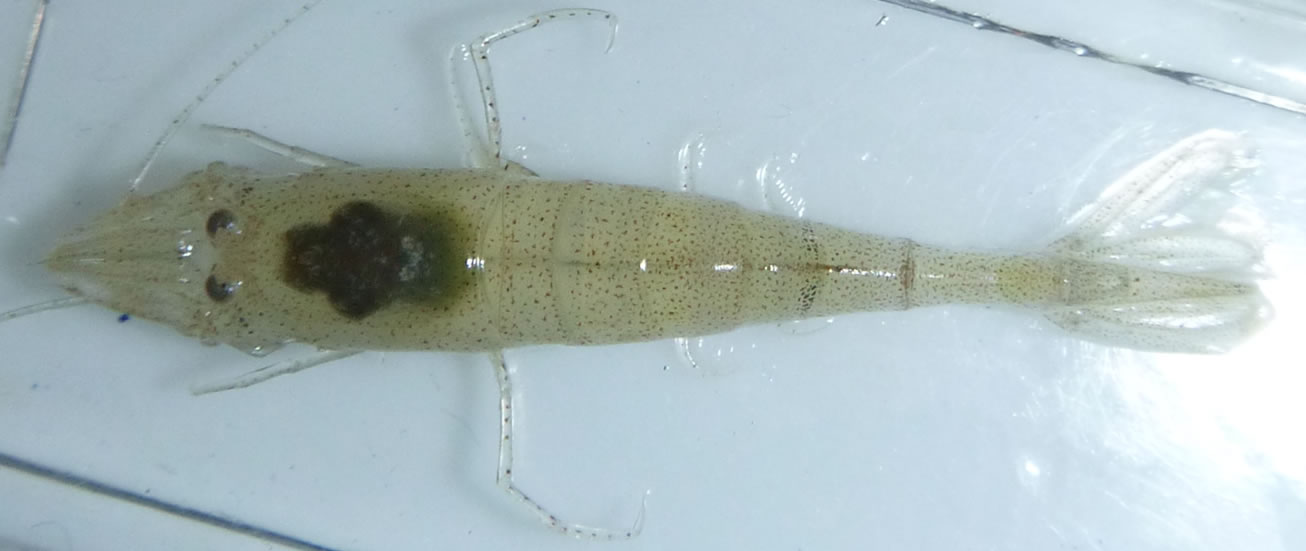
Shrimp 'hoovers' help scientists monitor what lives in seas
Friday 9 November 2018
NATURE is full of freeloaders - from corals that farm carbon-fixing algae in their bodies to barnacles that settle on the skin of whales to travel through food-rich oceans.
Humans are the masters of making the most of other organisms, most typically in the field of agriculture. But we are less familiar with the use of other creatures for more intellectual endeavours, such as, monitoring the environment. Take this new trick that allows marine biologists to carry out inventories of species simply by checking the diet of a shrimp.
The humble brown shrimp (Crangon crangon), it turns out, is like a seabed vacuum cleaner, hoovering up all manner of worms, crustaceans and fish.
A recent study of its stomach contents by the University of Salford found DNA sequences of at least 291 distinct species, making it not only an unfussy eater but a veritable ‘clearing house’ of marine life in its particular neighbourhood.
Spadework
“The shrimp is a surprisingly effective monitor of what fish live in a particular zone,” explained Stefano Mariani, professor of conservation genetics at the University of Salford. “So instead of searching for fish, researchers can just get the shrimp to do the spadework for them.”
Building a picture of what lives beneath the waves is not only scientifically interesting,it is crucial to maintaining healthy ecosystems, and regular surveys are mandatory in the UK and the EU.
However, the process involves catching fish in various types of nets, which is time-consuming, expensive and questionable in terms of marine welfare.
Professor Mariani’s team have been pioneering an alternative ‘DNA fishing’, which entails using genetic material left in the water to identify the ‘source’ species (commonly known as “environmental DNA”).
Pioneering methods
In their latest study published in the journal Molecular Ecology Resources, they take the methods a step further showing that rather than filtering tiny traces of DNA from water collected by researchers, a more realistic picture of the fish fauna can be obtained through the detection of DNA fragments inside a shrimp’s guts.
“The brown shrimp is a very effective gatherer of fish diversity, as it scavenges on dead fish,while also being capable of capturing tiny fish larvae,” says Dr Andjin Siegenthaler, who carried out the work for his PhD studies.

In the surveys the shrimp detected twice as many fish species as those collected by nets and were overall much more effective than humans at “raking DNA out of the sea”.
Shrimps are also widespread and abundant along European coasts, easy to sample, store and transport, and offer a low risk of cross-contamination.
Better data
Dr Chiara Benvenuto, co-author and lecturer in zoology at the University of Salford, said: “We were very interested to analyse the diet of these crustaceans and soon realised they could tell us much more about their habitat than we had predicted.”
Professor Mariani said environmental DNA methods were an opportunity to improve scientific data on the oceans: “In terms of the shrimp, it seems an elegant way to let it do what it has evolved to do so well, rather than having humans clumsily doing it less effectively.”
ends
Paper details
"Metabarcoding of shrimp stomach content: harnessing a natural sampler forfish biodiversity monitoring" Article ID: MEN12956, published in Molecular Ecology Resourceshttps://onlinelibrary.wiley.com/doi/10.1111/1755-0998.12956
Contacts
Stefano Mariani,Professor of Conservation Genetics, University of Salford, UK +44(0) 0161 2956913 / +44 (0) 7712 689871 s.mariani@salford.ac.uk
Find out more
Gareth Hollyman, Senior Press & PR Officer (Science)
0161 295 6895 g.b.hollyman@salford.ac.uk





